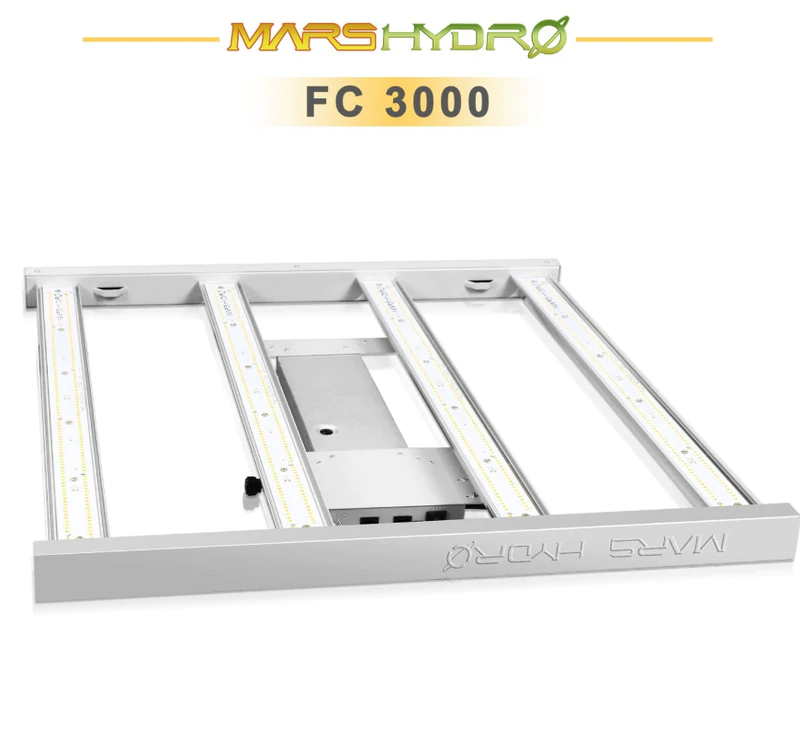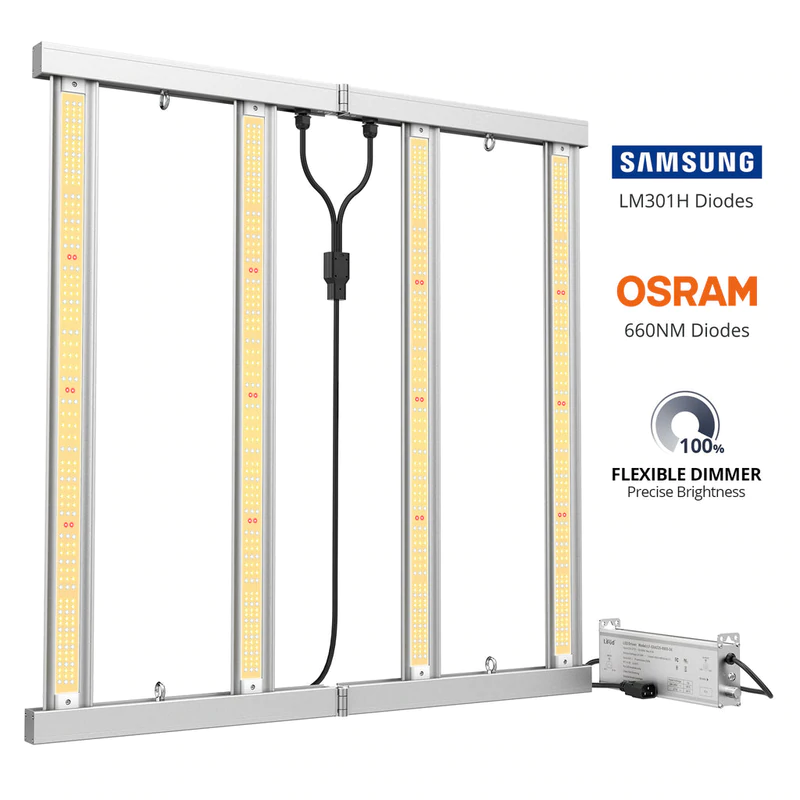- Home
- SHOP ECO FARM
-
TOP BRANDS
-
Grow Lights Brands
- Adjust-A-Wing
- Apollo Horticulture
- Bestva
- Black Dog LED
- California Lightworks
- ChilLED Grow Light
- Eco Farm
- HLG - Horticulture Lighting Group
- Kingled
- Kind LED
- Mars Hydro
- Morsen
- Neilo
- NextLight
- Phlizon
- PlatinumLed
- Roleadro
- Optic LED Grow Lights
- ViparSpectra
- Vivosun
- EYE Hortilux
- IPOWER
- NanoLux
- Phantom grow light
- Gavita grow lights
- Grower's Choice
- Lumatek
- Maxibright
- Yearld Pro
- ThinkGrow
- Crecer Lighting
- Green Sunshine Electric Sky
- fohse aries
- loriflux
- luxx
- fluence
- iluminar
- Lex
- LTC
- Rayonled
- FGI
- PHOTONTEK
- Grow Tents & Kits Brands
- Extraction & Harvest Brands
- Climate Control & Hydroponic Brands
-
Grow Lights Brands
- COMPANY INFO
- COOPERATE WITH US
- Blog
- Sign in
- Home
-
SHOP ECO FARM
- ECO Farm Grow Lights
- ECO Farm LED Grow Lights
- ECO Farm Quantum Board
- ECO Farm Samsung LED Grow Lights
- ECO Farm COB Grow Lights
- ECO Farm Commercial Lights
- ECO Farm Supplemental Grow Light
- ECO Farm Fluorescent grow lights
- ECO Farm HPS & MH Grow Lights
- ECO Farm CMH Grow Lights
- ECO Farm HID/CMH Bulbs & Ballasts
- ECO Farm Grow Tents & Kits
- ECO Farm 2x2ft Grow Kits
- ECO Farm 3x3ft Grow Kits
- ECO Farm 3.3x3.3ft Grow Kits
- ECO Farm 4x4ft Grow Kits
- ECO Farm 5x5ft Grow Kits
- ECO Farm Grow Tent - Standard Style
- ECO Farm Grow Tent - Extension & Roof & Lodge Style
- ECO Farm Extraction & Harvest
- ECO Farm Rosin Press Machine
- ECO Farm Dry & Wet Trimmers
- ECO Farm Oil Accessories
- ECO Farm Medicinal Plants Grinder
- ECO Farm Medicinal Plants Containers
- ECO Farm Medicinal Plants Dryer
- ECO Farm Refrigeration Dryer
- ECO Farm Climate Control & Other Accessories
- ECO Farm Inline Duct Fans
- ECO Farm Oscillating Fans
- ECO Farm Exhaust Fans
- ECO Farm Air Filter
- ECO Farm Duct Muffler
- ECO Farm Ventilation Kits
- ECO Farm Plant Humidifiers
- ECO Farm Plant Dehumidifiers
- ECO Farm Hydroponic Accessories
- ECO Farm Other Accessories
- ECO Farm Hydroponics Microscopes
-
TOP BRANDS
- Grow Lights Brands
- Adjust-A-Wing
- Apollo Horticulture
- Bestva
- Black Dog LED
- California Lightworks
- ChilLED Grow Light
- Eco Farm
- HLG - Horticulture Lighting Group
- Kingled
- Kind LED
- Mars Hydro
- Morsen
- Neilo
- NextLight
- Phlizon
- PlatinumLed
- Roleadro
- Optic LED Grow Lights
- ViparSpectra
- Vivosun
- EYE Hortilux
- IPOWER
- NanoLux
- Phantom grow light
- Gavita grow lights
- Grower's Choice
- Lumatek
- Maxibright
- Yearld Pro
- ThinkGrow
- Crecer Lighting
- Green Sunshine Electric Sky
- fohse aries
- loriflux
- luxx
- fluence
- iluminar
- Lex
- LTC
- Rayonled
- FGI
- PHOTONTEK
- Grow Tents & Kits Brands
- Apollo Horticulture
- Black Box
- CoolGrows
- Eco Farm
- GrowLab
- Gorilla Grow Tents
- Mars Hydro
- Quictent
- Secret Jardin
- Unit Farm
- TopoGrow
- VIVOSUN
- Topolite
-
COMPANY INFO
-
COOPERATE WITH US
- Blog
Mars Hydro FC 3000 LED Grow Light LM301B Osram Diodes VS Viparspectra KS3000 300W LED Grow Light
March 12, 2022
Growing plants in a confined space require proper lighting. For this, you can opt for LED grow lights offering efficiency and a good amount of brightness. Let’s take a look at some of the best LED grow lights out there and what to expect from each of them.
What exactly is full-spectrum LED grow light and why is it important?
Light Spectrum
First, you must understand the light spectrum, or color wavelengths. It is the range of light colors we see or didn’t see. Visible light that our eyes can see is between 380–740 nanometers. And similarly, the leaves of plants also enjoy these visible wavelength; the chlorophyll uses these light to manufacture food. The green light is an exception. Because chlorophyll only reflects green and they don’t absorb it, that explains why plants’ leaves are green. You can read more about these in this article.
So for the most parts, plants respond to the blue and red colors very well. These are the two most important wavelengths that plants need during their growth. Basically, plants need blue light for their vegetative phase and red light for the flowering period.
Understanding that, many grow light manufacturers have made it possible to produce the light colors plants need with their LEDs light. Many modern LED grow lights have a programmable setting to produce different color wavelengths. By this, you can control the type of lights at the different ratios for plants at different stages of growth in their life.
These types of LED lights with a very wide or full range of color wavelengths are called full-spectrum LED grow lights.
So two of the most important criteria that affect plant growth are light intensity (or the power of light output), and light colors (color wavelengths).
For light intensity, you can opt for the powerful light, but for light colors, you should choose one with a wide range of color wavelength (or full spectrum).
That’s why within the scope of this article, I’ll go into details all full-spectrum LED grow lights on the market, and help you pick the right one.
Mars Hydro FC 3000 LED Grow Light LM301B Osram Diodes

Features:
The Mars Hydro LED Grow Light is designed with commercial growers in mind, but it’s the perfect fixture for indoor gardens or growing of any size. The FC 3000 uses 896 LEDs with Samsung Lm301b and Osram 660nm for high output and excellent thermal control. This efficiency translates into lower costs for the end user. The Mars Hydro FC 3000 LED Grow Lights are designed to focus lighting on each bar, increasing light penetration into the canopy and giving plants a chance to absorb more light. For larger growers, the Mars Hydro FC 3000 can be easily expanded to include dimmable connections to support up to 30 lights!
Viparspectra KS3000 300W LED Grow Light

Features:
The Viparspectra LED Grow Light is a beneficial and reliable choice for your plants. Other brands distribute too much light to the center and too little to the outer edges. The larger size of the KS3000 ensures that every plant gets enough light from the corners to the center. The KS3000 enables indoor farms to reduce energy usage. This grow light consists of 3000K warm white light, 5000K neutral white light and 660nm deep red light. Additionally, this grow light features industry-leading photon efficiency of 3.10 μmol/J SAMSUNG LM301H and OSRAM 660nm diodes. The flexible dimmer allows you to adjust the light intensity from 0% to 100%. High-end components give the KS3000 incredible performance. The KS series is designed for individual or commercial growers who want to optimize their growing space for maximum crop yield while producing the highest quality crops.
LED Grow Lights Buying Guide
What are LED Grow lights?
LED technology is not something groundbreaking. It has been around for decades now.
LED stands for “light emitting diode.” It is a small bulb that converts electricity into light energy. The history of LED lights stretches back all the way back to 1907.
The earliest LED bulbs in the 1960s and ’70s were costly and used only in advanced instruments.
But in recent years, the costs have declined, and LEDs are used in everything from home lighting to consumer devices like TVs and mobile devices.
It was only a matter of time before LED panels started appearing in the hydroponics and indoor grow scene as well.
These days, LED grow lights are available in different sizes, intensities, and colors to suit various plant requirements. They are accessible for both small-scale as well as commercial productions.
What are the advantages of LED grow lights over HIDs?
Less heat
Compared to incandescent lamps, LED bulbs and panels emit much less heat. This is very important for plants, as extra heat can damage your crop.
Less heat also means that you can keep the lights much closer to the plants without fear of damage to the crop. That is one less factor to worry about when planning your grow system.
Less Power Consumption
Older incandescent lights are inefficient because a lot of the energy supplied is lost in the form of heat.
But since LEDs emit less heat, less electricity is being wasted as well. If you supply the same amount of electricity to an LED and HID, the LED will provide more light.
Typically, you can expect energy savings to the tune of 25–50% from LEDs.
Compact & Space Saving
In indoor grow areas, space is a precious commodity. LED systems take much less room than HIDs, and are easier to move around and manage.
Again, since they emit less heat, they also don’t need extra cooling equipment, unlike older HID lamps. This means less clutter.
LED grow systems these days are very flexible and can often be chained together. So you might even be able to reduce the mess of extra wiring.
Better Light Optimization
Plants require different light wavelengths during various stages in their light cycle.
These days, LED lights are available in different wavelengths. Many LED grow light systems also come with the option of adjustable wavelengths (Full spectrum LED lights).
By using specific wavelengths for plants at the correct stages, you can get maximum growth with minimal wastage of input energy.
Longevity
We all know about the fragility of incandescent bulbs. They have a propensity to burn out sooner or later.
LEDs are a different breed altogether. As they produce less heat, the components have less chance of burning up.
Modern LEDs often have a rated lifespan of tens of thousands of hours. So despite their higher cost, they are a more economical proposition in the long term.
Conclusion
Thanks for reading the entire Led product review
This is by no means a complete list. But we have done our best to hand pick the best and proven LED lights to develop in the market. No matter what choice you make, we’re sure you’ll get great results in your indoor garden.
Happy growing!
Also in Indoor Grow LED Grow Light
HLG Greenhouse Pro HE HV 630W LED Grow Light VS Geeklight grow light 480W hydroponic led grow light
October 20, 2023
